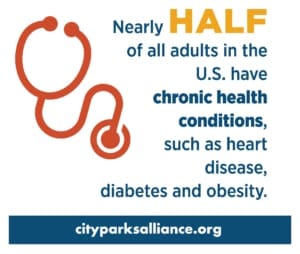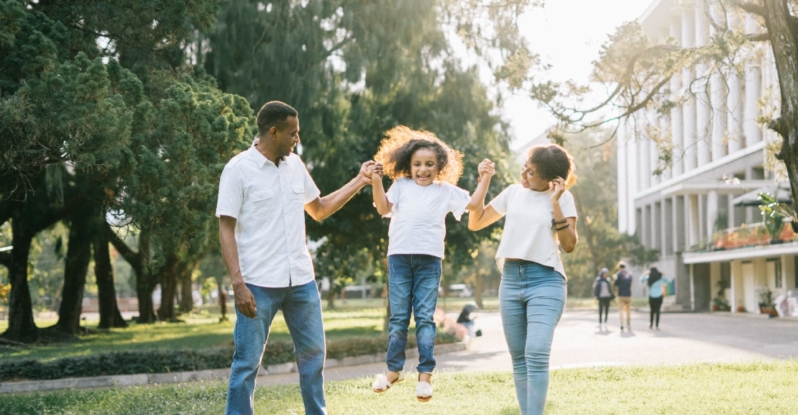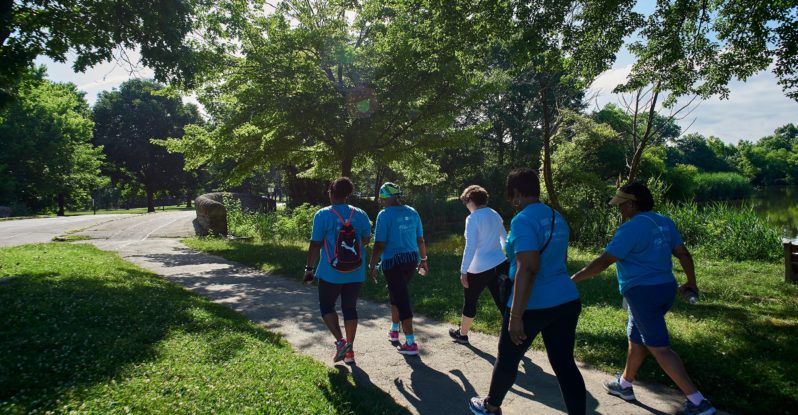This week the Municipal Art Society of New York is hosting its tenth annual MAS Summit. The 2019 Summit, Fight for Light, is a component of a larger citywide initiative in partnership with New Yorkers for Parks (NY4P) that seeks stronger protections for the natural resources that are essential to an equitable city and the health and happiness of city dwellers.
I’m excited to join a strong panel focused on parks and health including Nilka Martell, Founder of Loving the Bronx; Mitchell J. Silver, Commissioner, New York City Department of Parks and Recreation and City Parks Alliance board member; and Elva Yañez, Director of Health Equity, Prevention Institute. Our panel, Bright Ideas: Health, is moderated by Dr. Daphne Miller, medical doctor, author, and regular contributor to the Washington Post.
Together we will explore how physical, mental, and societal health are shaped by access to quality open space. At City Parks Alliance, we have been pushing for increased access to quality parks for nearly two decades and recently co-led the first National Study of Neighborhood Parks with the RAND Corporation. We found:
- Proximity Does Not Equal Usage – Proximity to a park does not guarantee people will use it: amenities, signage, and programming all determine who is active in parks and how people use them.
- Girls Are Underrepresented – Girls are less likely than boys to spend time in parks: only 40% of children and 35% of teenagers observed in neighborhood parks were girls.
- Few Seniors Are Using Parks – Adults comprise 49% of park visitors. Seniors account for only 4% of park users, even though they make up nearly 20% of the general population.
- Programming – Nothing increases park use and physical activity as much as programming—providing supervised activities to help people make use of the space—with each additional supervised activity leading to a 48 percent increase in park use and a 37 percent increase in physical activity.
To help park and recreation agencies and nonprofits identify low-cost park programming ideas, we gathered replicable examples from cities or all sizes around the country and compiled Active Parks, Healthy Cities: Recommendations from the National Study of Neighborhood Parks. I will share some of these examples at the MAS Summit this week. We are also looking for more, and seasonal, park stories. Do you have an example of how you’ve activated your park that you want to share with others in the park and recreation community? Check out our submission guidelines here. We may publish your example and promote it to our national network of park leaders. Collection and promotion of park programming, design, and marketing is sponsored by REI.

Nearly half of all adults in the U.S. have chronic health conditions such as heart disease, diabetes, and obesity, and one in three children is obese or overweight. Mental illness affects over 43 million adults in the U.S., according to the National Institute of Mental Health. Physical activity can reduce or prevent serious health problems and a nearby park equipped with the right facilities and programming can help get people outside, and leverage the positive health benefits of parks. I look forward to our panel and meeting attendees at MAS Summit 2019 in New York.


